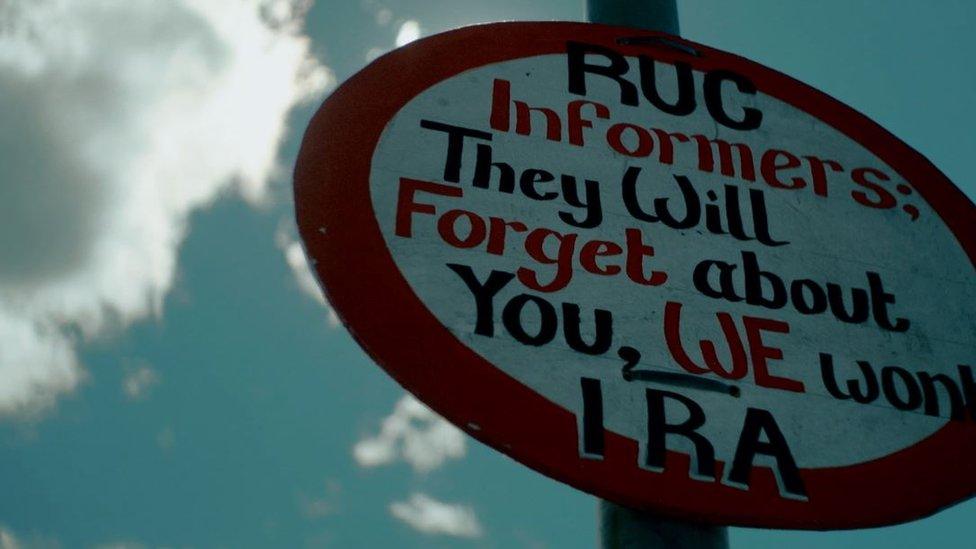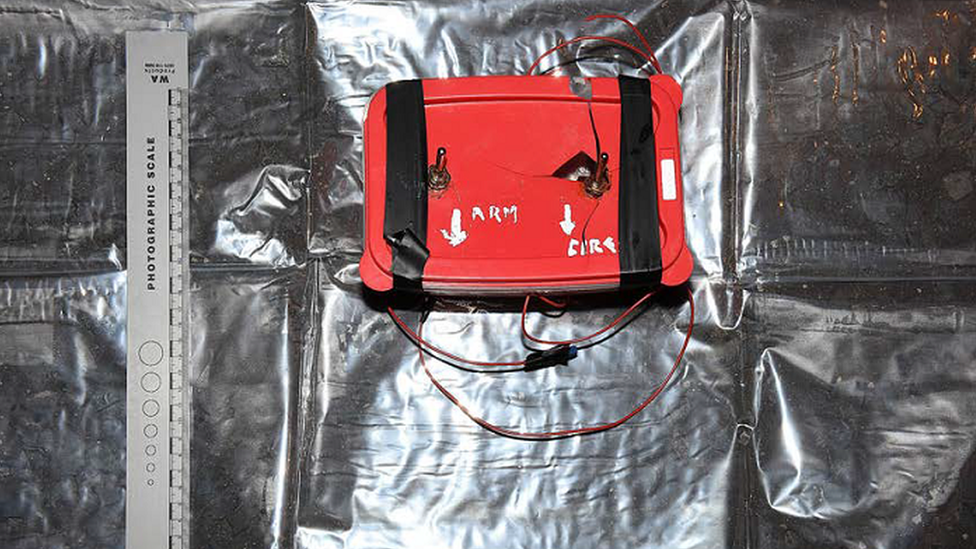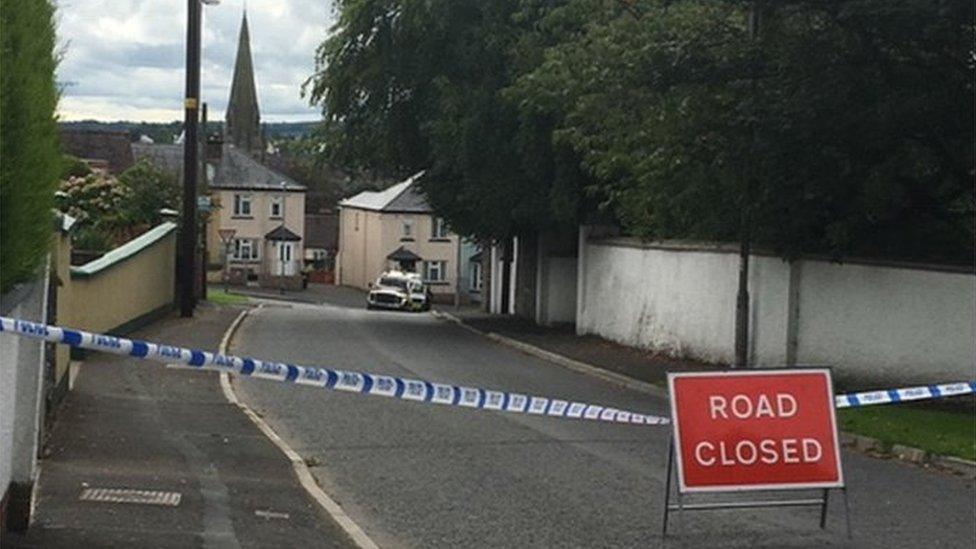Q&A: Why is dissident republican activity on the rise?
- Published

A makeshift sign in Londonderry's Creggan estate
Dissident republican activity has been stepped up in recent months, with attempted bomb attacks on police in Belfast, Craigavon and Fermanagh.
There have been eight attacks, or attempted attacks, targeting police between this January and September that are known about.
This compares to one attack in 2018. Figures for attempted attacks are not available.

A bomb was found in the Creggan area of Londonderry after police searches on Monday 9 September
How significant is the upsurge in violence?
Historically speaking, violence remains at a low level.
The two dissident republican groups involved are the New IRA and the Continuity IRA.
The Police Service of Northern Ireland is not only concerned by a renewed determination to carry out attacks, but their geographical spread.
Why is activity on the rise?
Both groups are said to want to demonstrate they continue to exist and that they remain capable of violence, partly as a means to attract recruits - not just young individuals, but those from an older generation.
First and foremost, they see themselves as continuing physical force republicanism against British rule.
While Brexit is not a major factor at present, any attacks grab more international media attention because of the Irish border issue.
It could also be they want to exploit the continued failure of power-sharing politics in Northern Ireland.
Northern Ireland has been without an executive since January 2017 when the two main parties, the DUP and Sinn Féin, split in a bitter row.
What are the group's capabilities?
Both the New IRA and the Continuity IRA have carried out murders in recent years and ceasefires are not on the horizon.
Each organisation has access to high-calibre weapons and explosives. Most of the incidents this year have involved small bombs.

Lyra McKee died in Londonderry on 18 April
The New IRA, formed in 2012, is the bigger group and is seen as more dangerous.
It has a wider reach, including Belfast and Derry, where journalist Lyra McKee was shot dead at police lines observing a riot in April.
The Continuity IRA emerged in 1986. Its power base is north Armagh, but it also has a presence in Fermanagh.
Is the New IRA's power base in Londonderry?
Yes, but it also has a presence in east Tyrone and Belfast. It is thought to have a support base of more than 500 people, with about 100 prepared to engage in acts of serious violence.
Creggan is a particular stronghold, where police search operations have been met by rioting.
Saoradh, the political party that the PSNI has described as the voice of the New IRA, has its main offices in the city.
Intelligence also links its senior activists, once in the Provisional IRA, to holding leadership positions in the New IRA.
Are more officers needed to deal with the threat?
MI5, with a significant base of more than 500 staff at Holywood, County Down, works closely with the PSNI against dissident republicans groups.

Chief Constable Simon Byrne has used the surge in activity to seek an extra 800 extra officers
It has the lead role in intelligence gathering. Since 2017, its co-operation is said to have "frustrated" 10 dissident attacks.
The strategy will not alter. Chief Constable Simon Byrne has used the surge in activity to support a demand for 800 extra officers.
But, principally, he wants them for neighbourhood policing in all areas, not anti-terrorism duties specifically.
- Published19 April 2019

- Published29 July 2019

- Published14 August 2023

- Published8 September 2019
